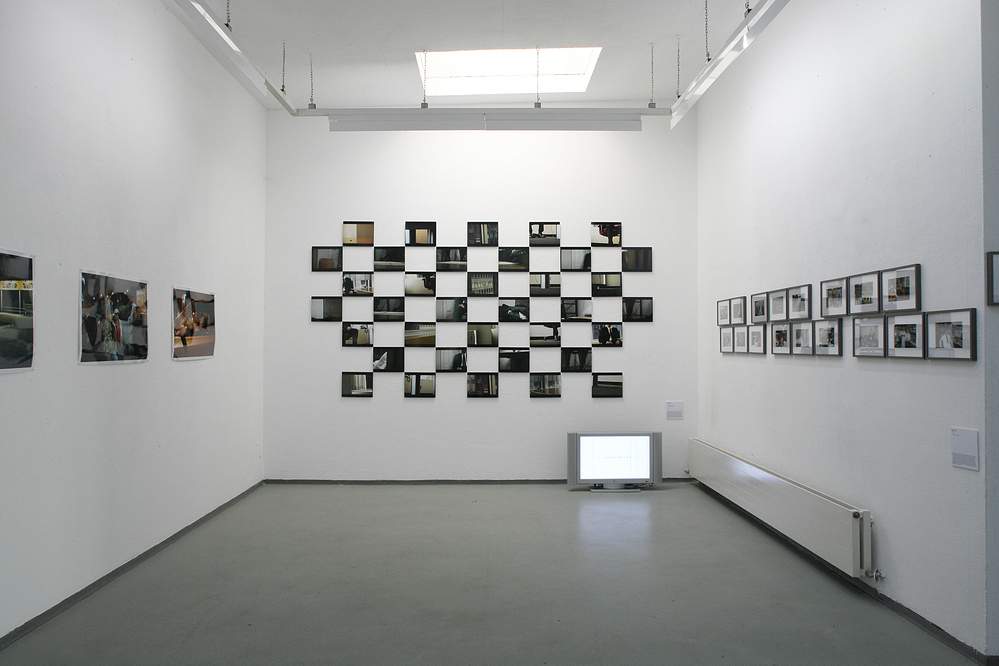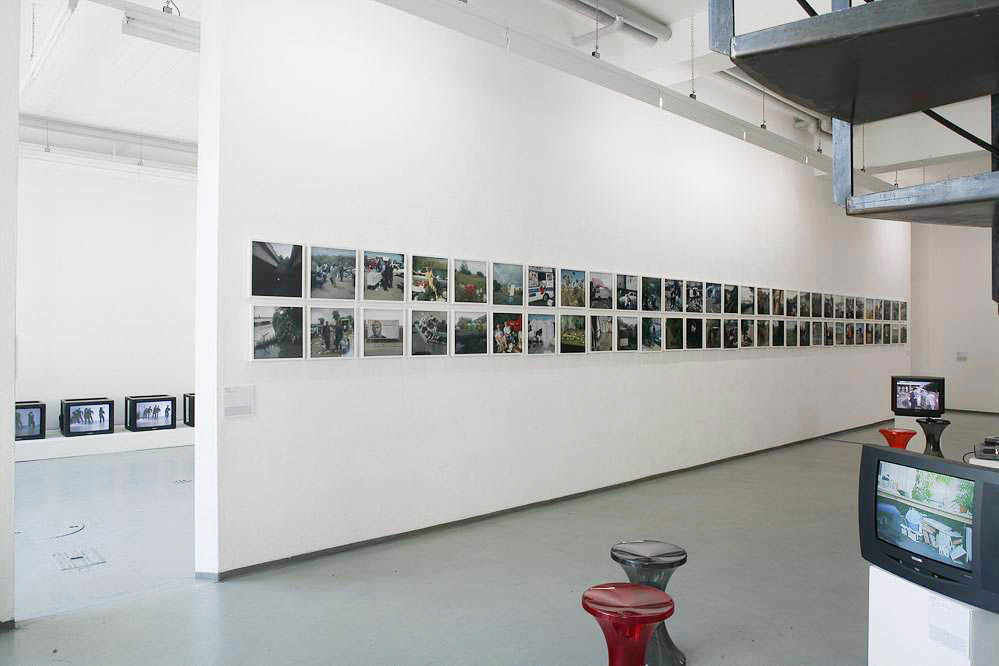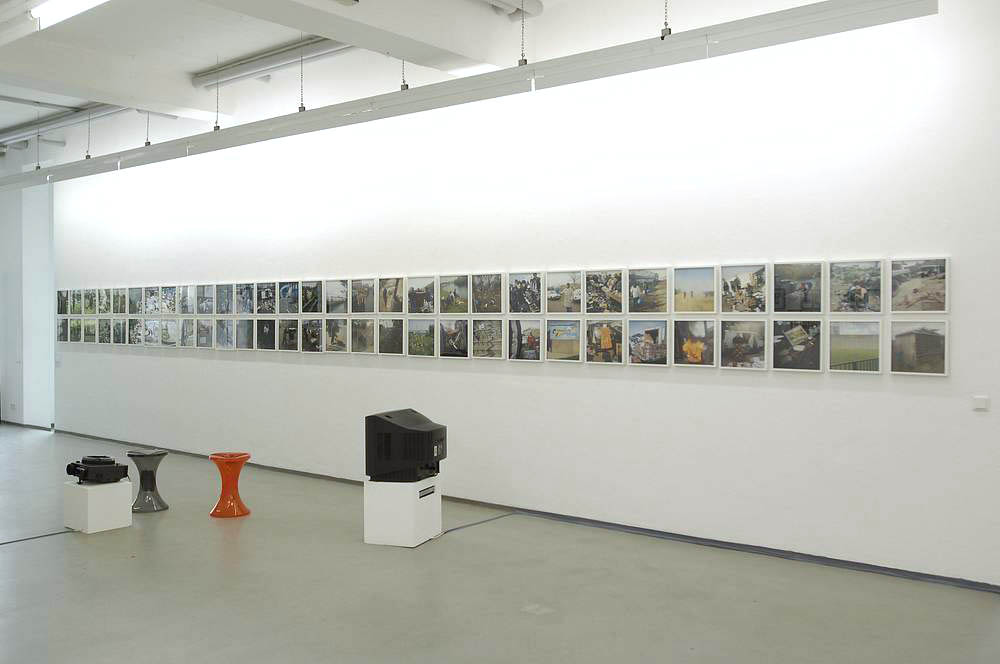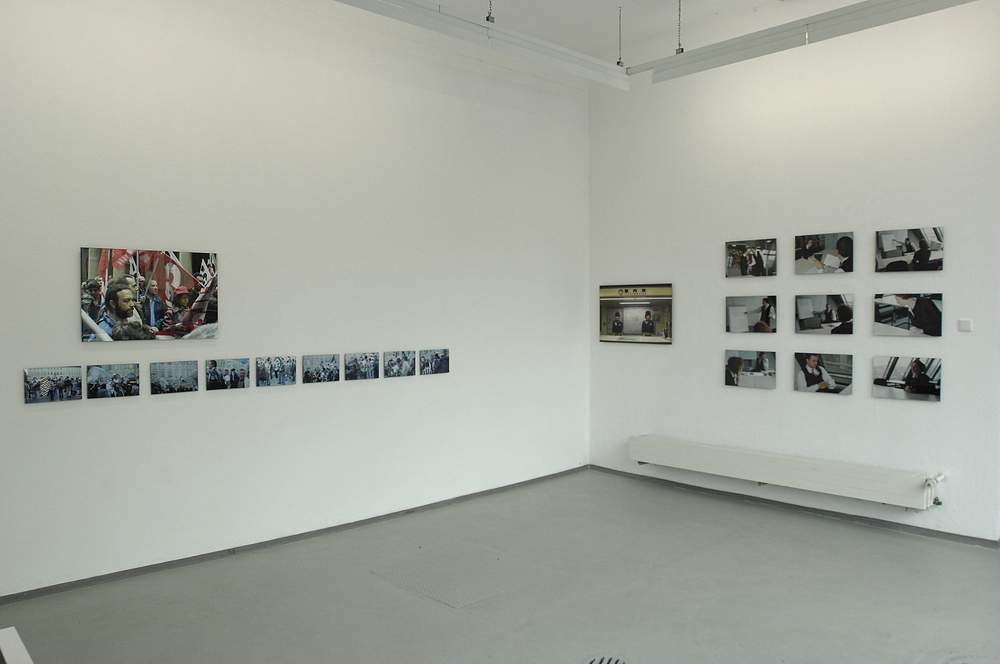State of Work
Slawomir Elsner, Katja Eydel, Stephen Gill, Sophie Hultén, Martin Keil & Henrik Mayer Reinigungsgesellschaft, Michaela Schweiger, Vassiliea Stylianidou, Tobias Zielony
Fear of the imminent loss of work or of long-term unemployment produces insecurities and new dispositions for insecurities. The security factor of work has long since turned into a factor of insecurity, constantly accompanied by the threat of loss and the awareness that full-time employment is scarce, or that work performed can no longer cover one’s livelihood. The exhibition at the FOTOHOF and the Salzburg Chamber of Labour highlights insecurity factors within socio-political labour systems. Insecurities that concern both precarious working conditions and conditions at the workplace as well as identity problems with the work to be done. Processes of insecurity that deal with the consequences of unemployment are also examined. The artists address the following questions: How will the meaning of work change and what are the effects on the real and imaginary levels of everyday life? Doesn’t the uncertainty factor increasingly determine the value of work? And is social security finally only a privilege of the rich? Slawomir Elsner stages himself in different environments and matching clothes: as a teacher, a policeman, a lifeguard, a funeral director, a taxi driver and so on. Slipping into different work roles seems very simple at first glance. The corresponding clothing suggests the respective professional identities. Just like the respective authentic contexts, they point as indications to certain identification processes with occupational groups. A game with representation of work that explores different professions as a field of experimentation for self-representation and its effects. Which work can I identify with, or is every work a role, and why do we define ourselves through work? Katja Eydel photographs the inner life of a large commercial manufacturing company in Berlin. She focuses her gaze on the relationship of distance that defines the workers’ relationship to their work and to their working environment. Automatisms of action determine everyday working life; elements of relationship to the work to be done and to the work spaces seem to be faded out or non-existent.A lack of identification zones causes alienation processes within the system of subject-work or subject-workplace. Processes and zones that promote identity, such as training or professions, lose their significance and can no longer offer protection against insecurities in times of omnipresent flexibilisation and the economisation of all areas.

Stephen Gill photographs the flea market/black market of Hackney Wick with a Bakelite plastic camera he bought there. Hackney Wick is on the outskirts of London, a run-down district waiting for 2012 when the stadium there will host the Olympics. Meanwhile, trade is going on, with scrap metal, cars, electronics, utensils, etc. Within an autonomous market that sets its own laws and commodity values, attempts are being made to counteract the insecurity produced by the international market and its insecurity strategies in a kind of self-organised market economy. The trade in waste products of capitalist consumer societies represents a manufactured marketplace of insecurities.
Sofia Hultén stages twelve attempts and possibilities to hide in office spaces. She crawls under the carpet, disappears in, behind or under office furniture, potted plants or in the toilet. The workplace is there but empty, no work and no employees are present, except for one. The last remaining employee strives to become invisible. She seems locked in spaces of work from which there is no escape. Locked in a system where work has already disappeared, but physical presence is enforced and where she searches for emergency exits, or emergency hiding places. Grey zones between work and non-work, or an escape from work, which as an alien object has nothing to do with one’s own identity, but is essential for survival. In her work, Reinigungsgesellschaft examines how human life inscribes itself in efficiency-oriented, flexible structures. In a video installation, RG deals with the virtualisation of work processes. For this purpose, recordings of automated movement processes in production and service companies have been made. The physical movement potential of the worker is shifted to the leisure sector. Within the framework of the project, RG developed photographic image series that address precarious social spaces of action and existing protest potential. Precarious social spaces are made visible as survival conditions and insecurity factors that threaten people’s existence. Michaela Schweiger combines fragments of the film “Themroc” (1972) with her own film material about the planned city of Hoyerswerda. Themroc (Michel Piccoli), a painter, has had enough of Fordist work constraints and hierarchical rituals of capitalist production systems. He burns all bridges behind him and a hole in the wall of his room, where he lives from now on as the prototype of a subject liberated from all constraints and norms. Michaela Schweiger contrasts this revolutionary gesture against the objectification of the subject through processes of instrumentalisation by means of working conditions with processes of desubjectification through the loss of work. The waiting of the unemployed for job opportunities is staged as a group line-up, the positioning of the unemployed on the street is presented as a turn-off action. Is insecurity generated to strengthen employers’ positions and produce anticipatory obedience? In addition to existential and social insecurities, physical and psychological insecurities are produced in this way.
Vassiliea Stylianidou’s installation consists of a series of video stills based on a preceding multi-part video work. Each video shows individual “floors” of the same camera panning, which in turn is shown in single, half-second stills. The videos are fragmented both temporally and spatially, each showing a parallel-shifted image section of the portrayed space and person, an employee. Between the video images, a text animation on a monitor informs the viewer about the code of dress and behaviour that the employee has to follow. A coperate identity that pre-programs spatial design, clothing design and social design defines work contexts and the employees who act in them. Rules of conduct and prescriptions suggest security, which are meant to disguise the spatial and temporal deconstruction processes of work in order to establish apparent guidelines for orientation. Tobias Zielony portrays the everyday lives of young people from Bristol, Newport, Marseille and Halle-Neustadt. He accompanies the young people over weeks and months and thus gains insights into their search for identity in places of progressive social marginalisation. With their refusal to participate in social structures and institutions, they elude adult communication, which initially leads to a speechlessness that they gradually replace with their own codes and symbols. For these young people, work is not available either as a real object or as an idea, as it is an unattainable phantasm. Social codes, identities and security in uncertainty are constituted by being a member of gangs. Groups with hierarchical structures define themselves through common everyday and survival struggles, through territorial marking rituals, through friendships or violence. Consequences of conditions of hopelessness in which forms of survival and self-organisation are practised beyond work opportunities and insecurity stands for an everyday and general way of life.



